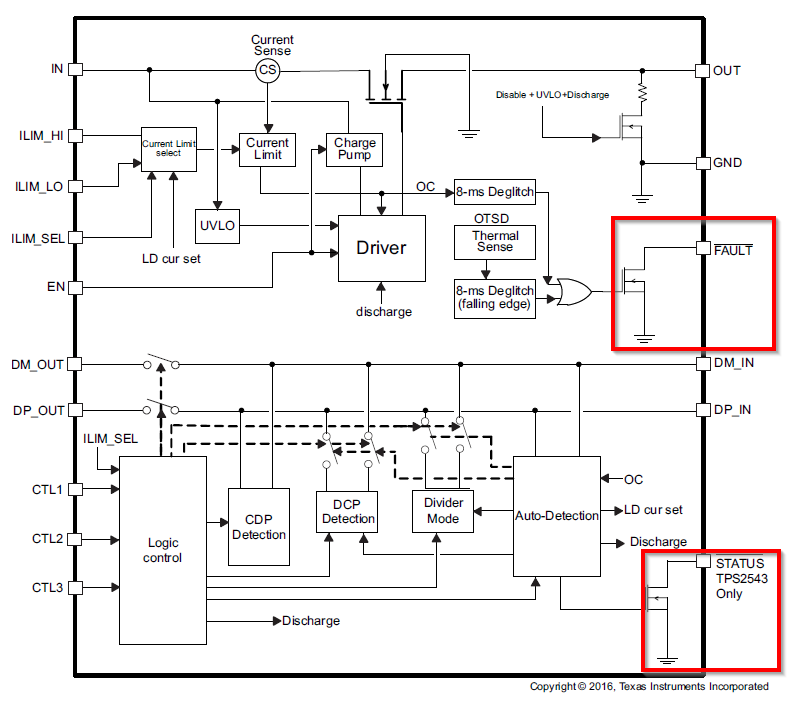hi,
From DS. of tps2546, STATUS pin will keep high when load current from OUT pin is < 45mA.With attached schematic, both D+/D- pins are float,STATUS pin is pull-up to external 3.3V power rail via 4.7kohm resistor . the STATUS pin is kept low even wehn OUT pin is floating ( it means that there is no current out of OUT pin). would you like kindly help check any possilbe error with the schematic? and what tests we should to do to find what cause this issue.




